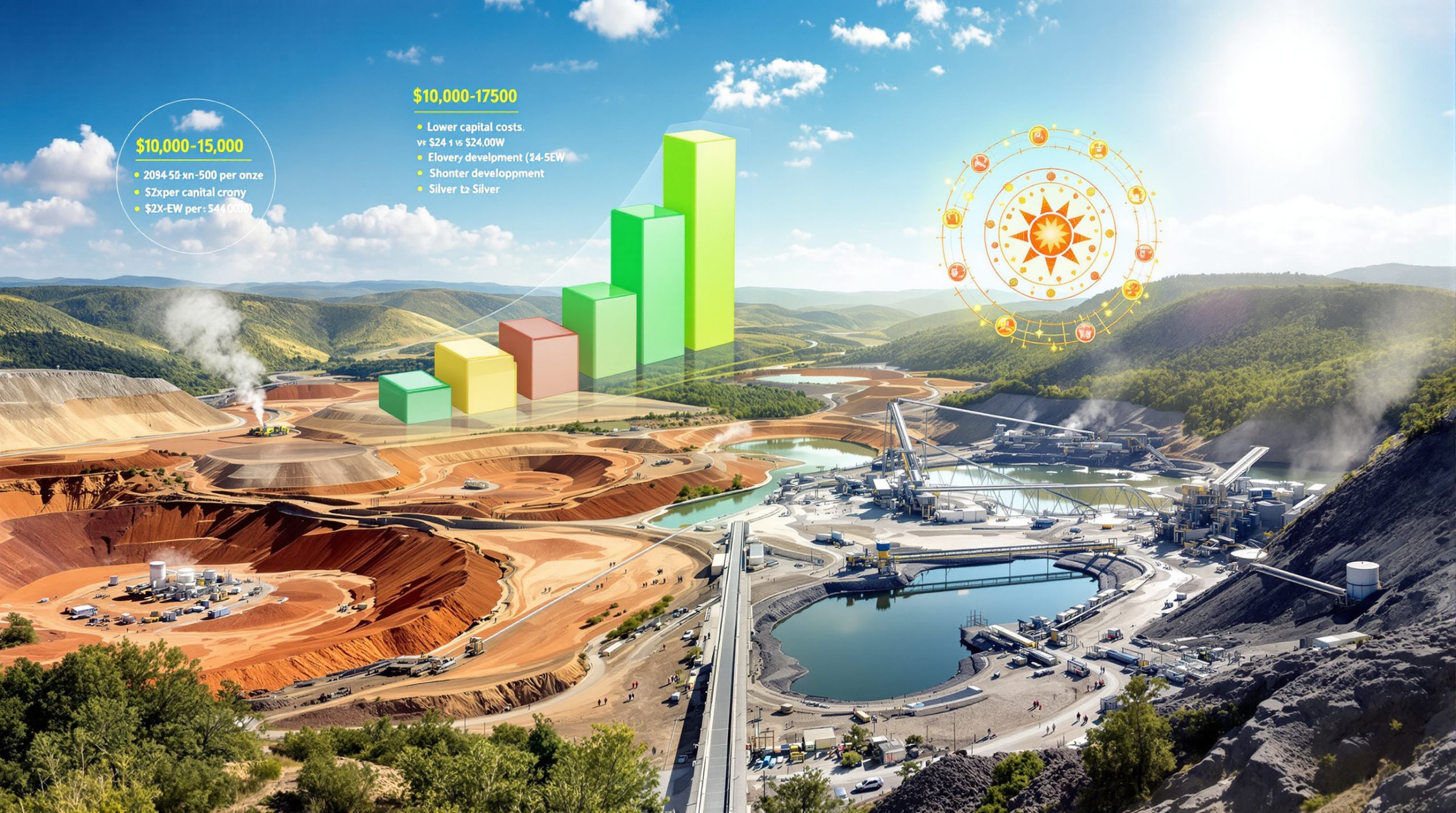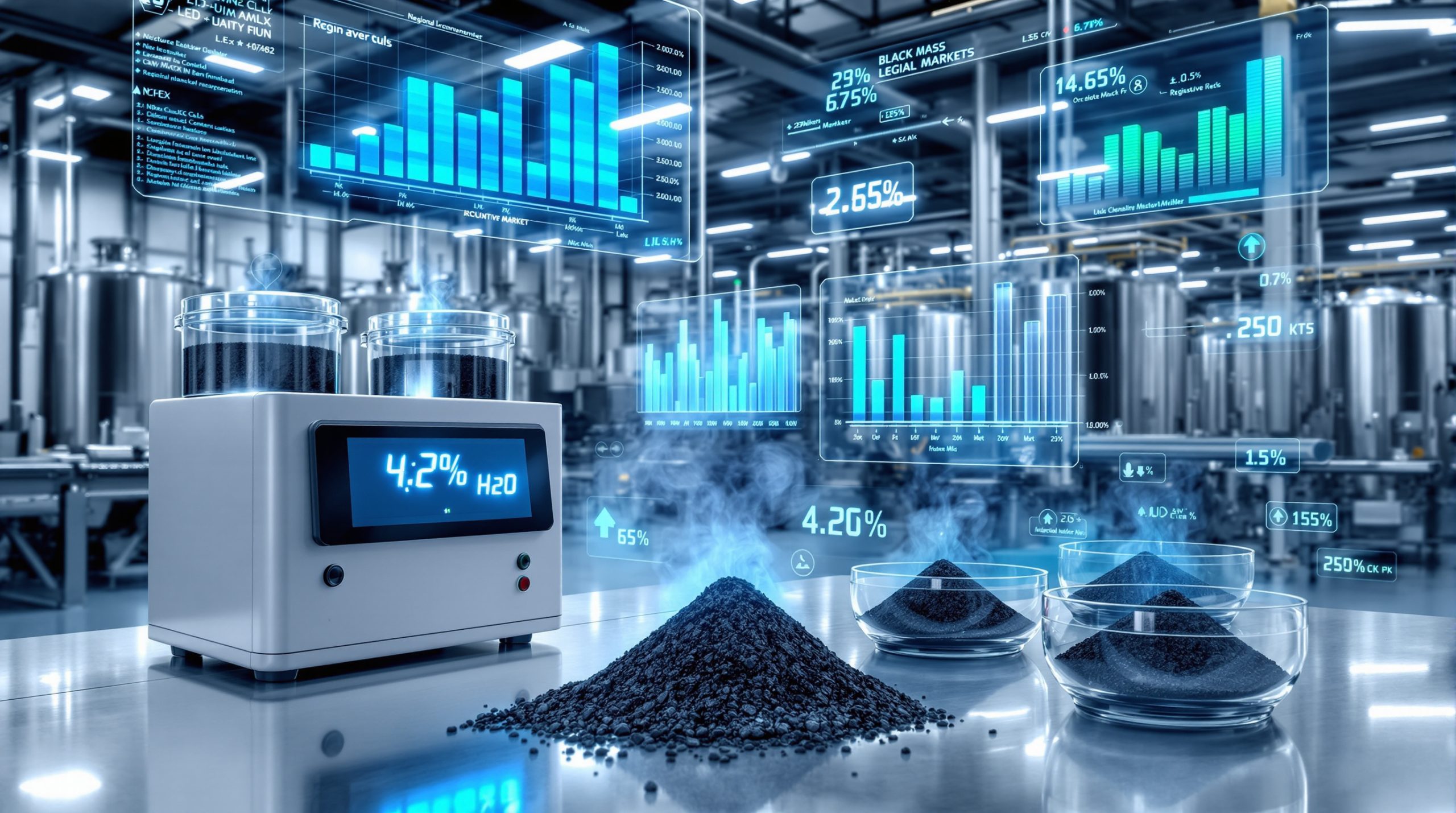Aurubis Richmond: A Game-Changer for US Copper Recycling
The launch of Aurubis AG's groundbreaking metal recycling facility in Richmond, Georgia marks a significant shift in America's approach to copper recycling and resource security. With an $800 million investment, this facility represents not just a business expansion but a strategic move to address critical vulnerabilities in US metal supply chains.
The Richmond plant stands as Europe's largest copper producer's first major US copper investment on American soil, designed to process up to 180,000 metric tons of complex recycling materials annually. This advanced facility will transform electronic waste, copper cables, and other metal-bearing products into valuable materials, including 70,000 tons of high-grade blister copper with 98-99% purity.
Cutting-Edge Capabilities Driving Resource Recovery
The Richmond facility employs sophisticated processing technology to recover not just copper but also valuable nickel, tin, and precious metals from waste streams that would otherwise be lost. This multi-metal recovery approach maximizes the value extracted from each ton of processed material while supporting circular economy principles.
Production at the facility began in September 2025, with full operational capacity expected by the first half of 2026. When fully operational, the plant will represent one of the most advanced metal recycling facilities in North America.
The Critical Role of Domestic Copper Recycling
America's Growing Copper Challenge
The United States currently faces significant challenges in securing adequate copper supplies. With domestic demand reaching approximately 1.8 million tons annually and roughly 50% of this copper being imported from international sources, the country remains vulnerable to supply disruptions and price volatility.
This dependency creates strategic risks for industries ranging from electronics manufacturing to renewable energy development, particularly as global copper supply intensifies. The Richmond facility directly addresses these vulnerabilities by establishing a reliable domestic source of recycled copper.
Advancing National Security Through Resource Recovery
Copper's strategic importance continues to grow across multiple sectors, including:
- Defense and military applications requiring reliable components
- Renewable energy infrastructure dependent on conductive materials
- Electric vehicle manufacturing with intensive copper requirements
- Critical telecommunications and grid infrastructure
By recycling complex waste materials domestically, the Richmond facility keeps valuable resources within the US economy while reducing reliance on international supply chains that may be subject to geopolitical tensions or disruptions.
Transforming America's Copper Market Dynamics
Reducing Import Reliance Through Advanced Recycling
The Richmond facility's 70,000-ton annual production capacity represents a meaningful contribution to domestic copper supply. When operating at full capacity, this single facility will offset approximately 7-8% of current US copper imports, establishing a more resilient supply foundation.
This production comes at a crucial time as copper demand accelerates across multiple industries:
- Grid modernization requiring vast quantities of conductive materials
- Electric vehicle production consuming 2-4 times more copper than conventional vehicles
- Renewable energy installations requiring significant copper inputs
- Data center expansion driving demand for electronics-grade copper
Strategic Customer Focus on US Manufacturing
Aurubis has explicitly stated intentions to prioritize US customers for the copper produced at Richmond. This approach will help meet growing domestic demand while potentially offering more stable supply arrangements for American manufacturers facing increasingly competitive global markets for critical materials.
The facility's operational flexibility provides multiple market pathways:
- Direct sales to US customers at competitive market rates
- Further processing through Aurubis' international smelting network for specialized applications
- Integration into value-added product manufacturing for specific industries
Technical Innovations Driving Performance
Multi-Metal Recovery Excellence
The Richmond facility employs sophisticated metallurgical processes that extract maximum value from complex waste streams. Beyond copper, the facility recovers:
- Nickel: Critical for batteries, stainless steel, and aerospace applications
- Tin: Essential for electronics manufacturing and soldering
- Precious metals: Including gold, silver, and platinum group metals with high value-to-weight ratios
This comprehensive recovery approach represents a significant advancement over traditional recycling methods that often focus exclusively on high-volume materials while neglecting valuable trace elements.
Circular Economy Implementation at Scale
The facility embodies circular economy principles through its systematic approach to resource recovery:
| Material Input | Recovery Approach | Market Output |
|---|---|---|
| Electronic waste | Thermal processing and separation | High-grade blister copper |
| Copper cables | Mechanical processing and smelting | Nickel, tin, and precious metals |
| Metal-bearing products | Advanced sorting and metallurgical recovery | Refined metals for industrial applications |
By creating this closed-loop system, Aurubis transforms waste streams that might otherwise end up in landfills into valuable manufacturing inputs, significantly reducing the environmental footprint of metal production.
Economic and Environmental Benefits Beyond Manufacturing
Regional Economic Development Impacts
The Richmond facility represents a substantial economic investment in the region, generating both immediate construction jobs and long-term industrial positions. The facility creates:
- High-skill technical positions in metallurgical processing
- Supporting logistics and administrative roles
- Indirect employment through supplier relationships
- Potential for additional downstream businesses leveraging recovered materials
This economic activity strengthens the local manufacturing base while developing specialized expertise that can support further industry innovation trends.
Substantial Environmental Advantages
Metal recycling offers compelling environmental benefits compared to primary production from mined ores:
- Energy efficiency: Copper recycling typically requires up to 85% less energy than primary production
- Carbon footprint reduction: Significantly lower greenhouse gas emissions per ton of metal produced
- Water conservation: Reduced water usage compared to conventional mining and processing
- Land preservation: Less disruption to natural landscapes from mining activities
- Waste reduction: Prevention of valuable metals entering landfills or waste streams
By maximizing these environmental benefits at scale, the Richmond facility contributes meaningfully to sustainable mining practices while maintaining economic viability.
Future Expansion Potential in the American Market
Strategic Growth Opportunities
According to Aurubis CEO Toralf Haag, the company sees significant potential for additional projects in the United States. Industry analysts note the Richmond facility may represent just the first phase in a broader North American strategy for the European metals giant.
"With the high availability of recycling material and good local conditions, the American market offers Aurubis appealing prospects that we will continue to consider closely in the future as well."
This statement reflects confidence in both material availability and favorable operating conditions that could support additional investments.
Market Factors Supporting Further Development
Several factors make the US market particularly attractive for continued metal recycling expansion:
- Growing waste streams: Increasing volumes of electronic waste and end-of-life products
- Policy support: Renewed focus on domestic manufacturing and supply chain security
- Industrial demand: Strong manufacturing base requiring reliable metal inputs
- Infrastructure quality: Well-developed transportation networks and utility systems
These conditions create a strong foundation for continued investment in advanced recycling capacity, potentially establishing the US as a global leader in circular economy implementations.
Setting New Global Standards for Copper Recycling
Technological Leadership in Material Recovery
The Richmond facility incorporates state-of-the-art technologies that place it among the most advanced recycling operations globally:
- Highly automated sorting and processing systems
- Sophisticated metallurgical recovery techniques
- Advanced material handling capabilities for diverse inputs
- Efficient energy management and recovery systems
This technological sophistication allows the facility to process more complex materials with higher recovery rates than conventional recycling operations, establishing new benchmarks for the industry.
Comparative Advantages in the International Context
When compared to other global copper recycling operations, the Richmond facility demonstrates several distinctive advantages:
- Scale efficiency: Operating at a capacity that enables economies of scale
- Multi-metal focus: Recovering a broader spectrum of valuable elements
- Integration capabilities: Connected to international processing networks
- Strategic positioning: Located to serve growing North American demand
These advantages position the facility as a competitive force in global metal recycling markets while establishing new standards for operational excellence.
Broader Industry Implications and Future Outlook
Establishing New Benchmarks for Resource Recovery
The Richmond facility establishes new standards for metal recycling in North America that will likely influence:
- Industry practices for complex material processing
- Regulatory approaches to waste management and recycling
- Investment patterns in circular economy infrastructure
- Manufacturer engagement with recycled material streams
By demonstrating the technical and economic viability of advanced recycling at scale, the facility creates a compelling case for similar investments across the industry.
Addressing Critical Material Supply Challenges
The facility helps address growing concerns about critical material availability for strategic industries:
- Clean energy technologies requiring reliable metal supplies
- Advanced electronics manufacturing facing input constraints
- Defense applications dependent on secure material sources
- Transportation electrification demanding increased copper volumes
This contribution to material security represents a significant benefit beyond the direct economic value of the facility's operations.
FAQ: Understanding Aurubis Richmond's Copper Recycling Impact
What types of materials will the Aurubis Richmond plant process?
The facility will process up to 180,000 metric tons of complex recycling materials annually, including printed circuit boards, copper cables, and various metal-bearing products containing valuable recoverable metals from consumer and industrial sources.
How does copper recycling compare to primary copper production?
Copper recycling typically requires 80-85% less energy than primary production from mined ore, while also significantly reducing carbon emissions, water usage, and land disruption. The Richmond facility leverages these efficiency advantages while recovering multiple valuable metals from waste streams.
Will the recycled copper meet the same quality standards as newly mined copper?
Yes, the high-grade blister copper (98-99% purity) produced at Richmond can be further refined to meet the same quality specifications as primary copper, making it suitable for all standard industrial applications including electronics, electrical equipment, and infrastructure.
How significant is this facility for US copper supply?
The Richmond facility will help reduce US reliance on imported copper, which currently accounts for approximately 50% of the country's 1.8 million ton annual demand. The plant's 70,000-ton annual production capacity represents a meaningful contribution to domestic supply security.
What environmental benefits does the facility provide?
Beyond energy and carbon savings, the facility diverts valuable metals from landfills, reduces the environmental impact of mining, and supports circular economy principles by keeping resources in productive use for longer periods while minimizing waste generation.
Future Directions in US Copper Recycling
As the Aurubis Richmond facility reaches full operational capacity in 2026, its performance will likely influence further developments in US metal recycling infrastructure. Industry experts anticipate additional investments in this sector as manufacturers increasingly prioritize recycled materials for both sustainability and copper investment strategies for both sustainability and supply security reasons.
The facility's success may also accelerate technological innovation in metal recovery processes, potentially enabling even higher recovery rates from complex waste streams in the future. This ongoing development will be crucial as the US continues to address critical material needs for emerging technologies and infrastructure modernization.
According to a detailed Aurubis Richmond facility factsheet, the plant's environmental performance will significantly exceed regulatory requirements while establishing new standards for the industry.
Disclaimer: This article contains forward-looking statements regarding market impacts and facility performance. Actual results may vary based on operational factors, market conditions, and regulatory developments.
Ready to Invest in Companies Leading America's Copper Revolution?
Stay ahead of the curve with Discovery Alert's proprietary Discovery IQ model, which instantly identifies promising opportunities in critical mineral sectors including copper recycling innovations. Explore how major mineral discoveries can lead to exceptional returns by visiting Discovery Alert's dedicated discoveries page.




